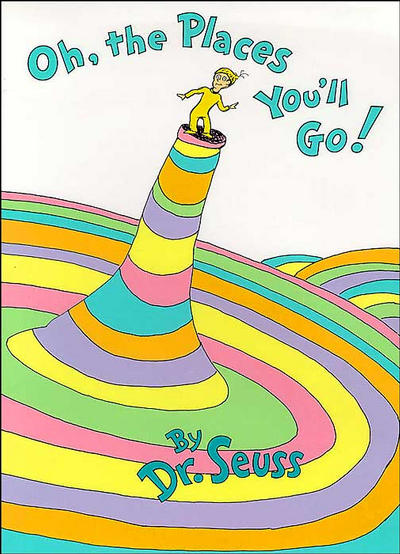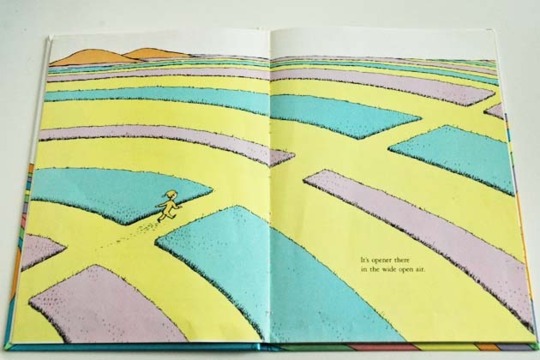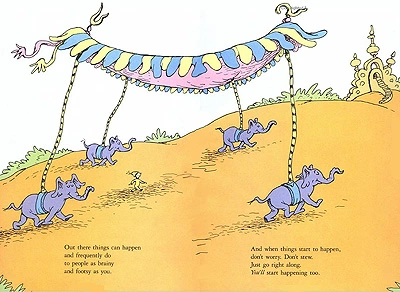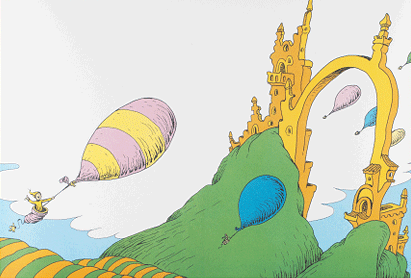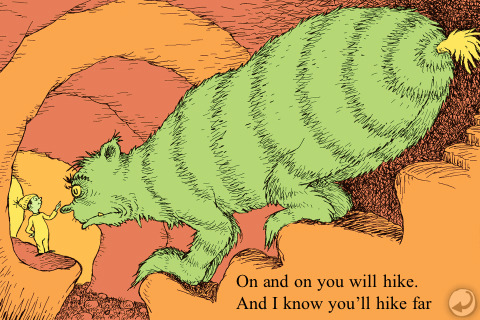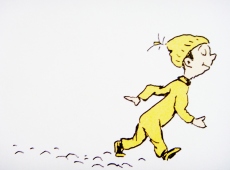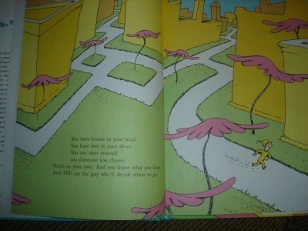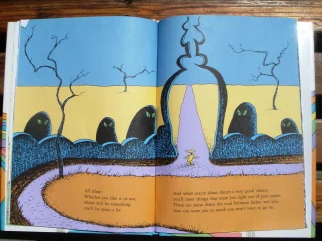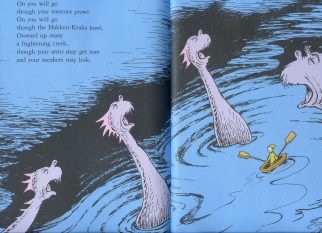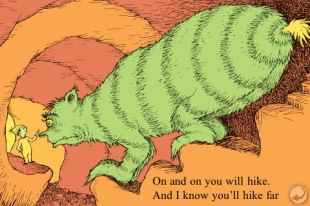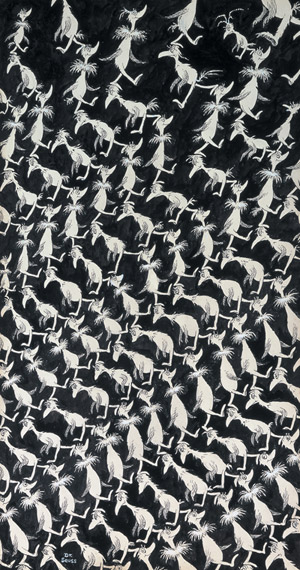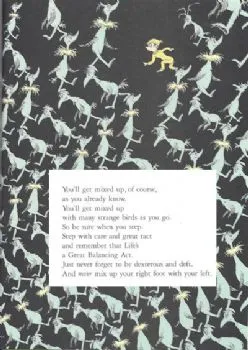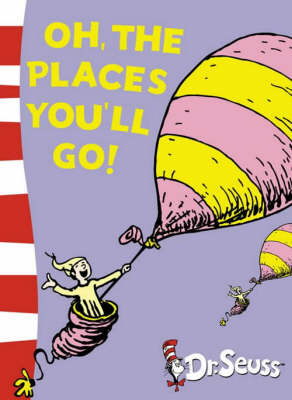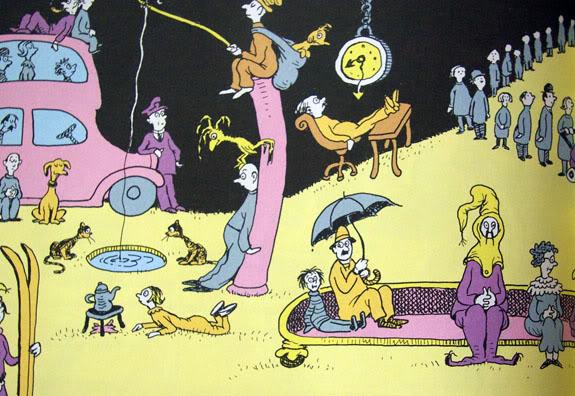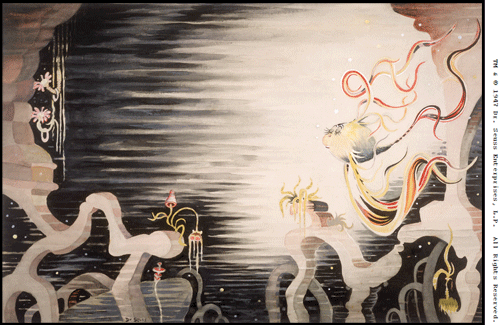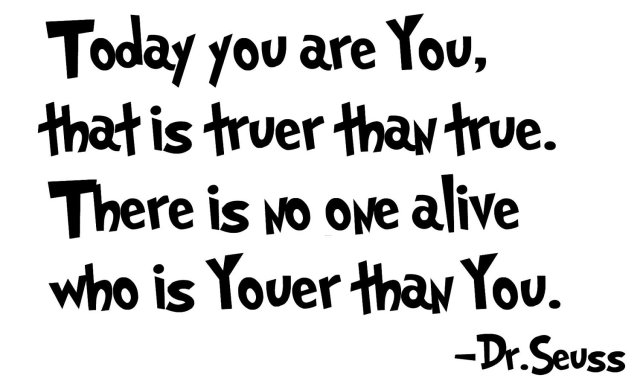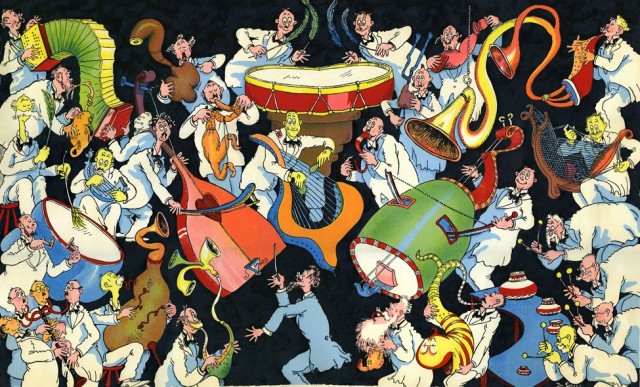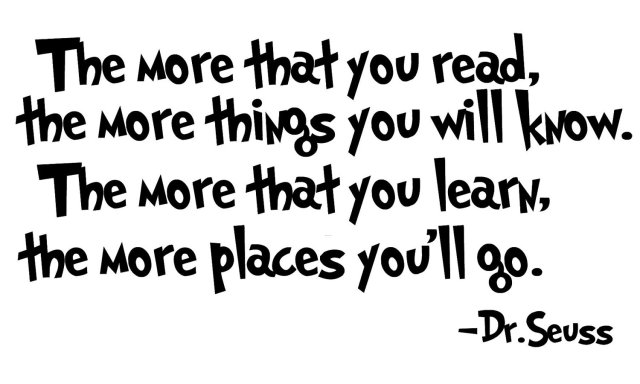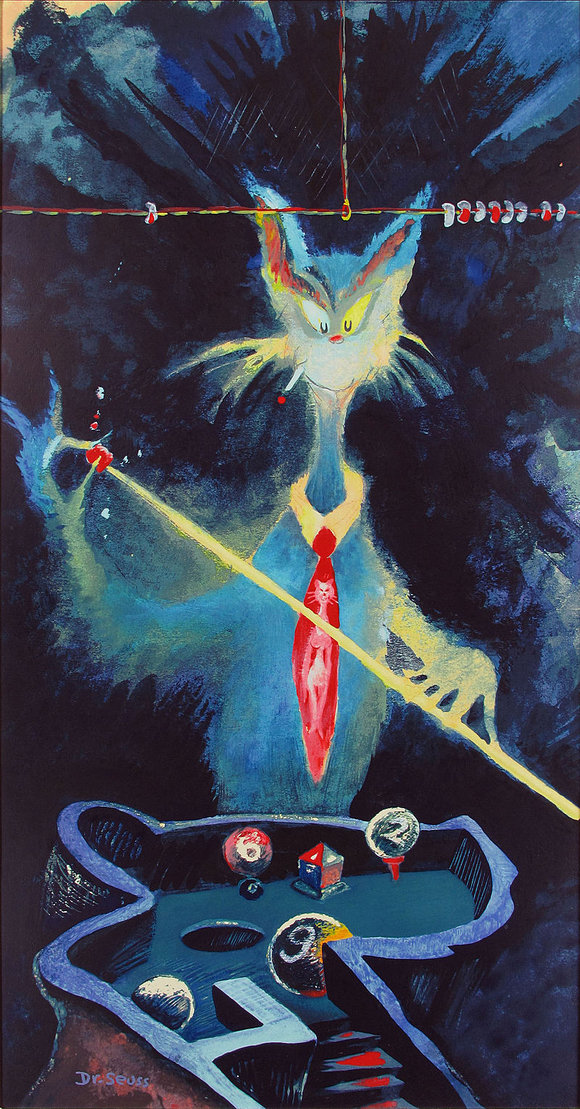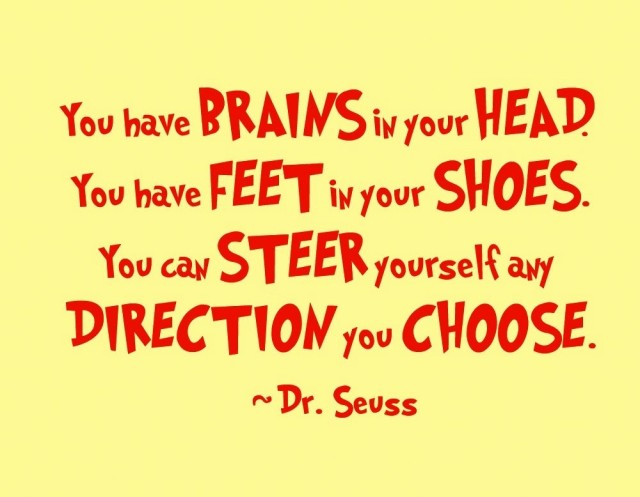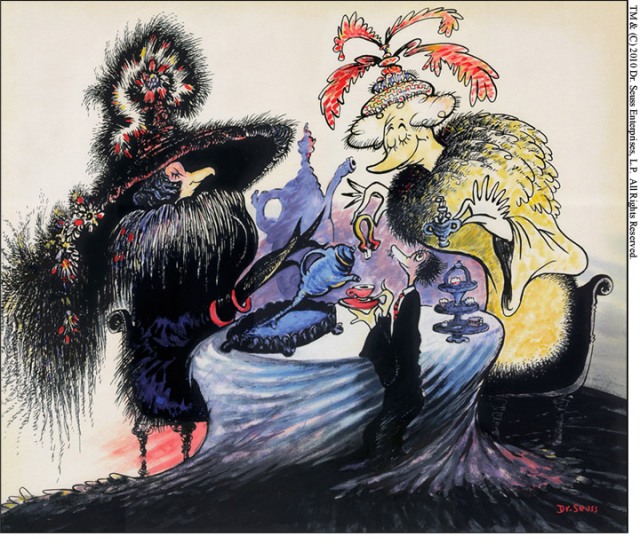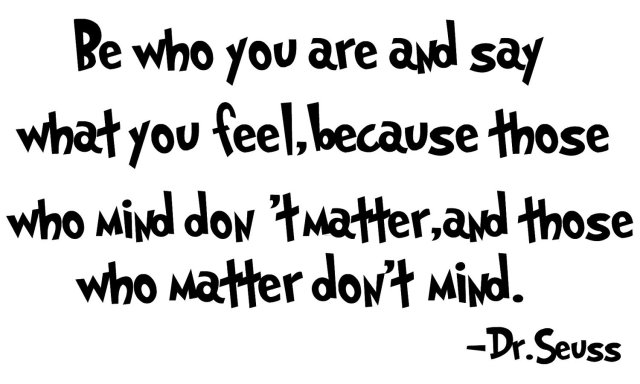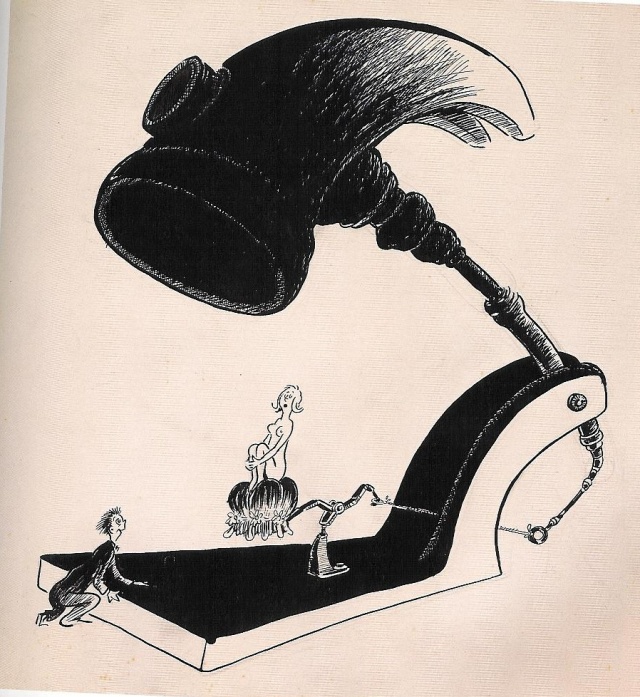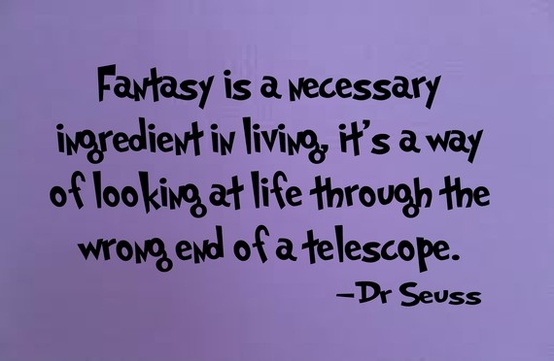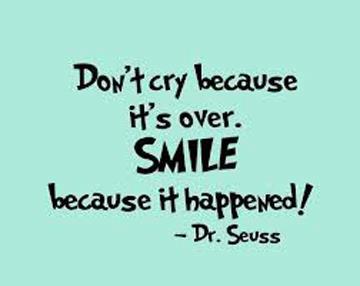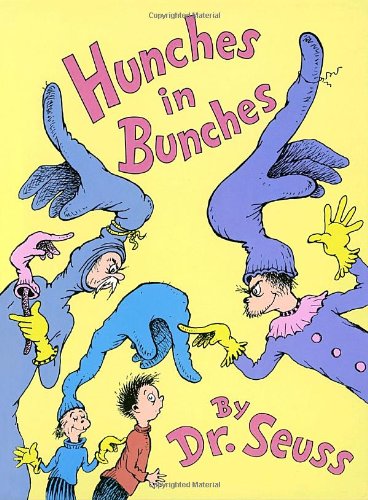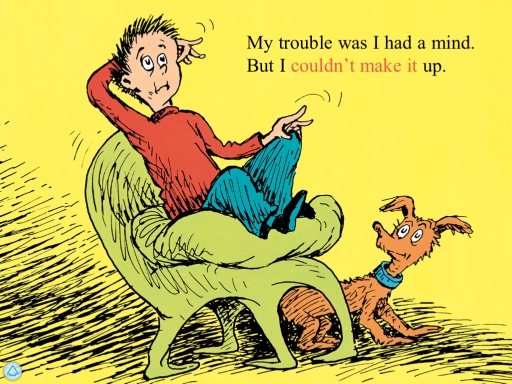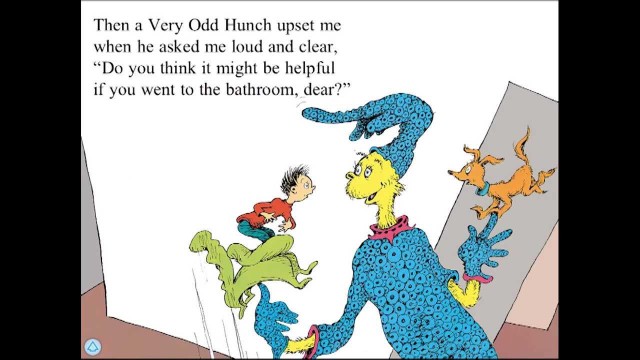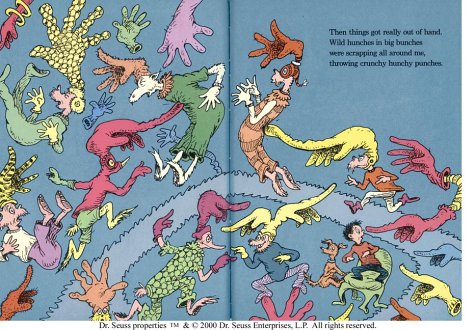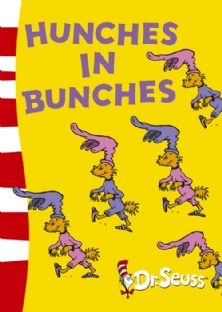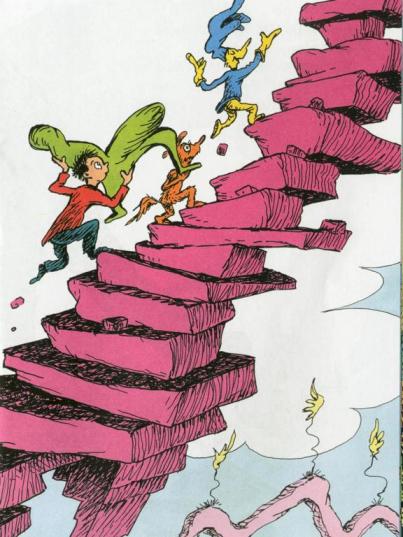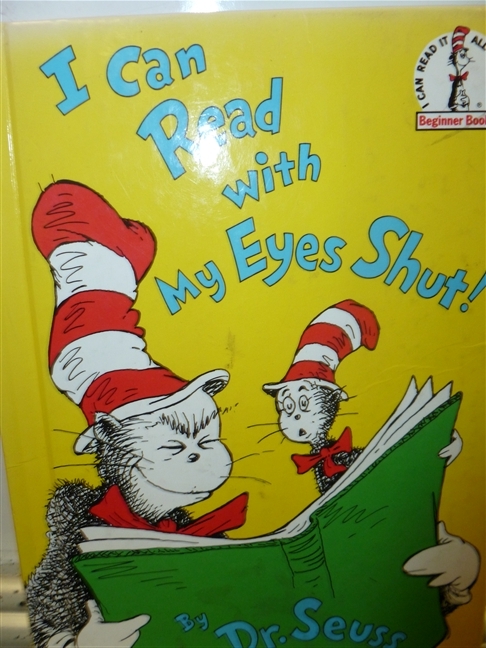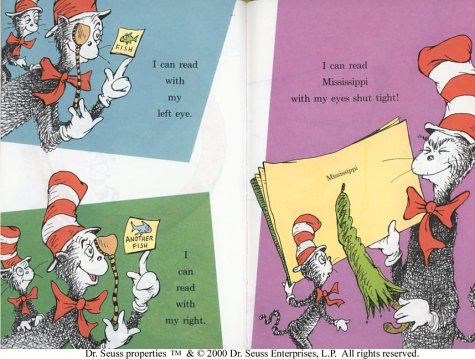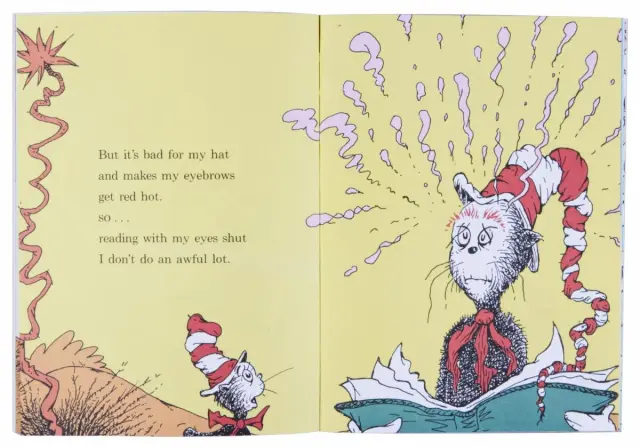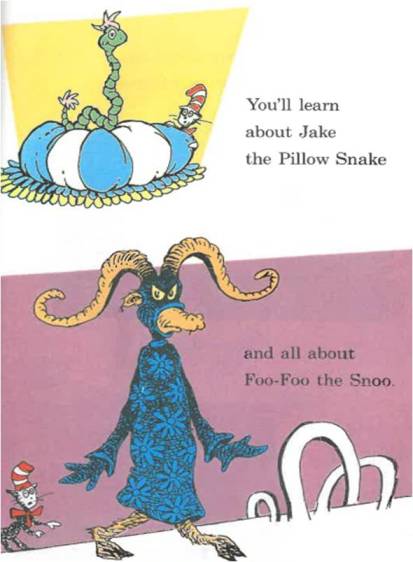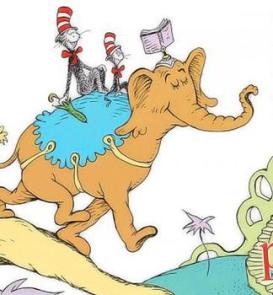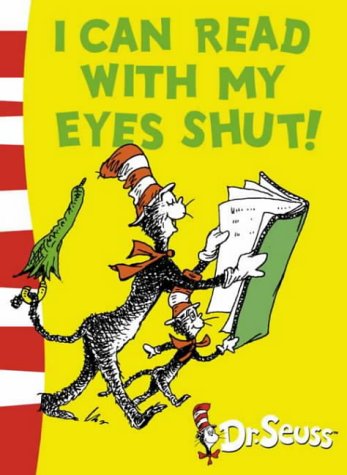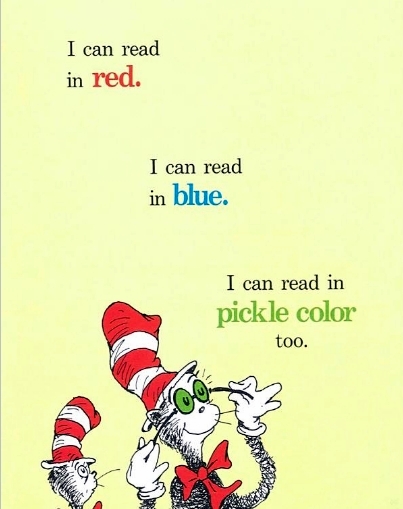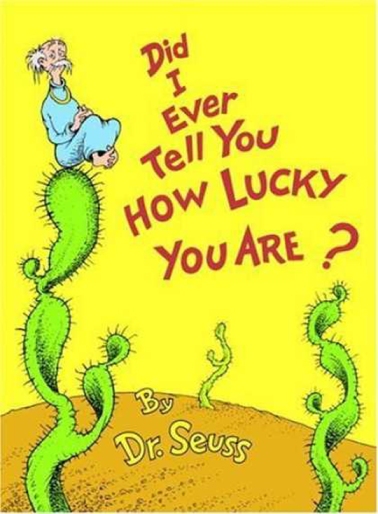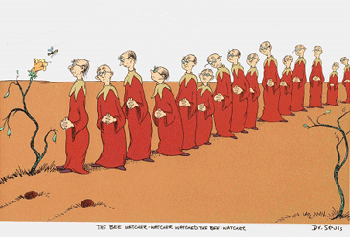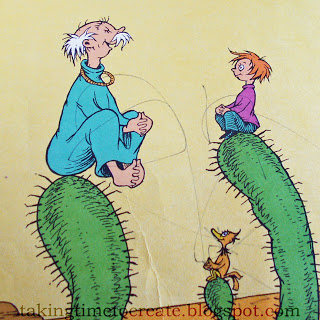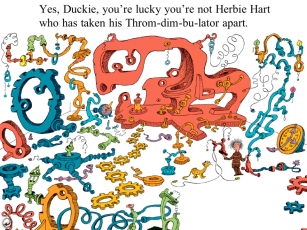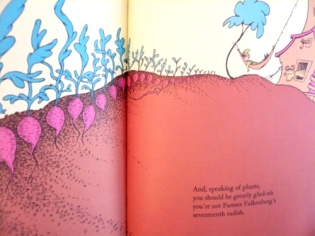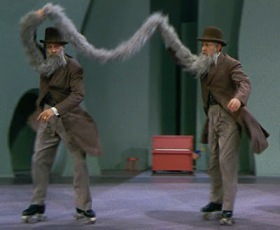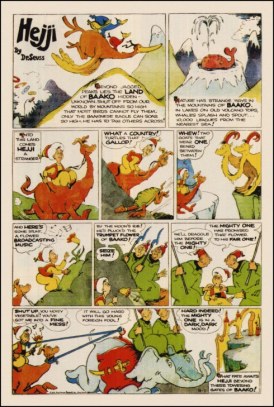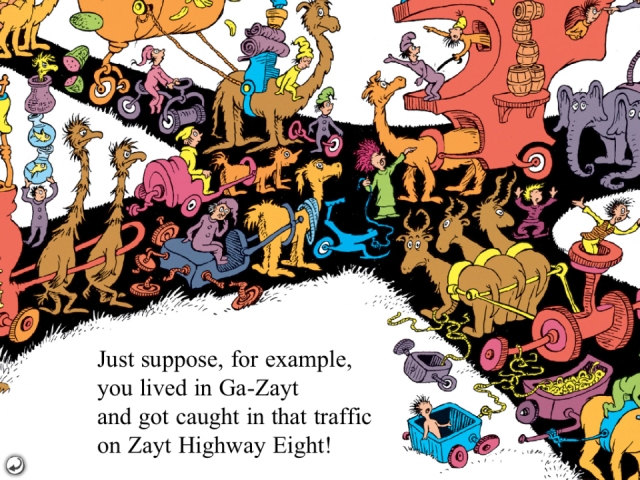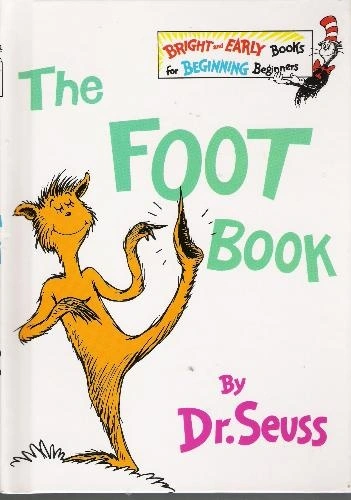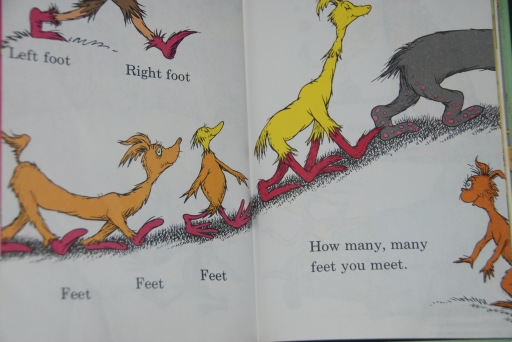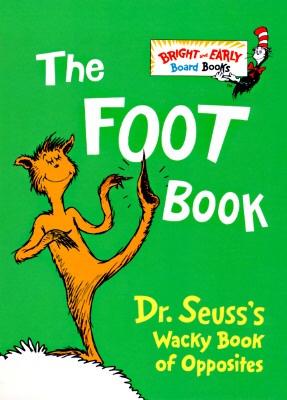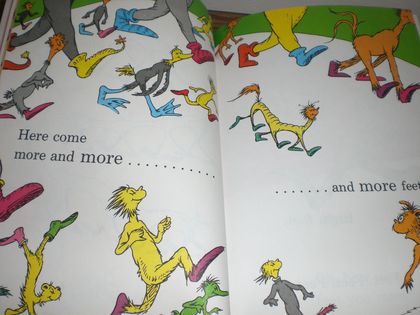Published in 1990 by Random House
Review by Booklist:
“Writers often tend to mellow in their later years, but fortunately Dr. Seuss seems just as cantankerous and quirky as ever. Life may be a ‘Great Balancing act’ but through it all ‘there’s fun to be done.'”
Review by Gannett News Service:
“Rangy, wise and wonderfully witty…This may well be a summing up on his part, his farewell with a flourish.”
SUMMARY:
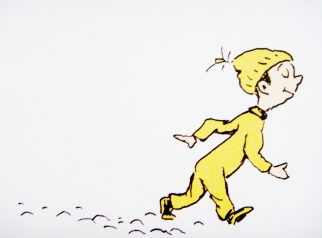 Oh, the Places You’ll Go begins with “Congratulations!” It is a celebration of accomplishment and exciting things to come. The first illustration is on an all white page with only a small young boy dressed in yellow walking confidently forward towards the next page. He is described only as “you.” For the next several pages he is always seen headed to the right, steadily approaching his future.
Oh, the Places You’ll Go begins with “Congratulations!” It is a celebration of accomplishment and exciting things to come. The first illustration is on an all white page with only a small young boy dressed in yellow walking confidently forward towards the next page. He is described only as “you.” For the next several pages he is always seen headed to the right, steadily approaching his future.
“You have brains in your head.
You have feet in your shoes.
You can steer yourself
any direction you choose.You’re on your own. And you know what you know.
And YOU are the guy who’ll decide where to go.”
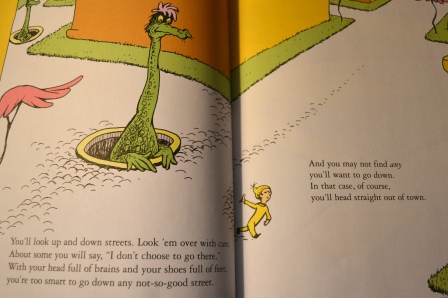 Our hero decides not to go down some “not-so-good streets.” In fact, he doesn’t like any of the streets around him so he heads straight out of town where:
Our hero decides not to go down some “not-so-good streets.” In fact, he doesn’t like any of the streets around him so he heads straight out of town where:
“It’s opener there
in the wide open air.”
Then things start to become a bit more Seussian! Our hero starts to approach strange new places with Horton-looking elephants. He is, once again, headed toward the next page with a confident steady stride.
“Out there things can happen
and frequently do
to people as brainy
and footsy as you.”
The next spread of pages grabs the reader’s attention with bold solid stripes taking over the pages in bright colors! For the first time we see our hero with his back to us, looking in wonder just as the reader is. 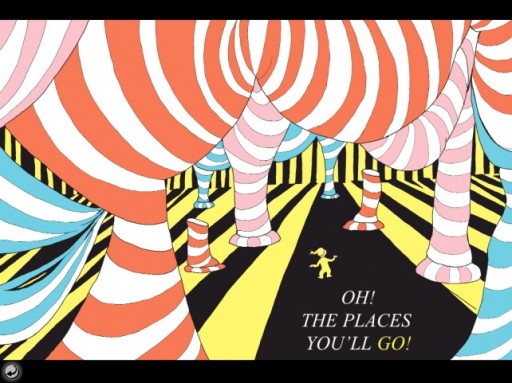
“You’ll be on your way up!
You’ll be seeing great sights!
You’ll join the high fliers
who soar to high heights.”
Soon our hero is in the lead with all the other balloons close behind. The hills are colorful square patches rolling off into the distance. Then Seuss slams on the breaks. Our hero’s balloon is stuck on a branch and he’s watching everyone else fly by, leaving him behind with a look of surprise on his face. The hills are now a somber blue.
“You can get all hung up
in a prickle-ly perch.
And your gang will fly on.
You’ll be left in a Lurch.”
Then the background gets dark and squiggly! Our hero is on the ground, still moving forward, but much more hesitantly. His surroundings are lumpy and droopy in dull blues and purples.
“And when you’re in a Slump,
you’re not in for much fun.
Un-slumping yourself
is not easily done.”
Things become even stranger and more unfamiliar to our hero. He is presented with a mishmash of curvy arches and doorways in different colors. None of them are marked and there are no clear paths.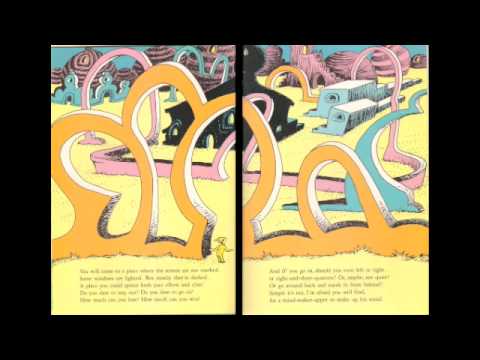 Our hero chooses a direction, but he runs down it at full speed and becomes even more lost in an even stranger place. Then he arrives at The Waiting Place where everything is stagnant because it is a place…
Our hero chooses a direction, but he runs down it at full speed and becomes even more lost in an even stranger place. Then he arrives at The Waiting Place where everything is stagnant because it is a place…
“…for people just waiting.
Waiting for a train to go
or a bus to come, or a plane to go
or the mail to come, or the rain to go
or the phone to ring, or the snow to snow
or waiting around for a Yes or No
or waiting for their hair to grow
Everyone is just waiting.Waiting for the fish to bite
or waiting for wind to fly a kite
or waiting around for Friday night
or waiting, perhaps, for their Uncle Jake
Or a pot to boil, or a Better Break
or a string of pearls, or a pair of pants
or a wig with curls, or a Another Change.
Everyone is just waiting.”
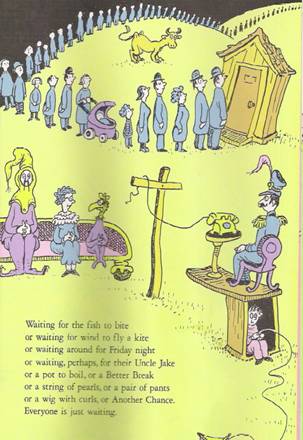 Somehow our hero breaks free! The next page is colorful again and big and loud! There are several strange musical instruments all being played at full blast!
Somehow our hero breaks free! The next page is colorful again and big and loud! There are several strange musical instruments all being played at full blast!
“Somehow you’ll escape
all that waiting and staying.
You’ll find the bright places
where Boom Bands are playing.”
Then the elephants are back in full numbers with banners held high. Our hero sits on one of their heads once again confidently heading towards the future!
 He plays wild Seussian sports with crazy nets and hoops and other players popping up out of the ground!
He plays wild Seussian sports with crazy nets and hoops and other players popping up out of the ground!
“Fame! You’ll be famous as famous can be,
with the whole wide world watching you win on TV.”
…
“Except when they don’t.
Because, sometimes, they won’t.
Now our hero plays alone with a single ball and an old tattered hoop. He is on a crazy, rickety, old Seussian-structured house. The colors are dull and our hero has no smile.
“I’m afraid that sometimes
you’ll play lonely games too.
Games you can’t win
’cause you’ll play against you.”
Once again, our hero has his back to us as he faces another strange archway, but now it’s much darker and ominous with large eyes staring at him and Tim Burton like trees on a flat landscape.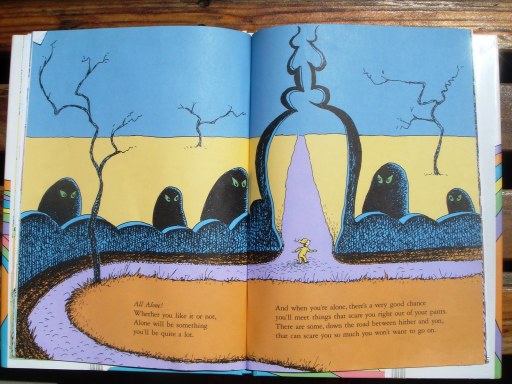
“All Alone!
Whether you like it or not,
Alone will be something
you’ll be quite a lot.And when you’re alone, there’s a very good chance
you’ll meet things that scare you right out of your pants.
There are some, down the road between hither and yon,
that can scare you so much you won’t want to go on.”
Now for the first time our hero is facing back towards the rest of the book rather than forward toward the next page. He is in a small row boat on endless dark waters with only large wailing creatures around him. The blue of the water is heavily contrasted by the large orange cave on the next page. Our hero now pats a vicious looking creature on the nose. He is back to facing what is coming.
“On and on you will hike.
And I know you’ll hike far
and face up to your problems
whatever they are.”
Then our hero is seen in a crazy mess of birds walking on each others’ heads. Each row alternates going left and then right. All the ones going forward toward the right have smiles on their faces with their beaks held high. The birds going back toward the left are depressed with slumping posture. Our hero is turned around yet again and headed backwards. (Image can be seen in the HISTORY section of this post.)
“You’ll get mixed up, of course,
as you already know.
Step with great care and great tact
and remember that Life’s
a Great Balancing Act. “
Our hero gets facing the right direction again at the very tip of the bottom right corner ready to take on any challenge. He is pulling a rope with a great mountain on wheels trailing behind him.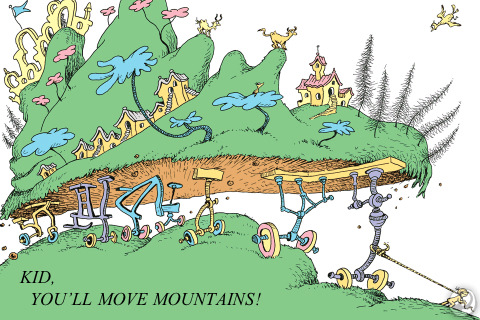
“And will you succeed?
Yes! You will, indeed!
(98 and 3/4 percent guaranteed.)KID, YOU’LL MOVE MOUNTAINS!
The final page ends just as the beginning started. With our hero in the exact same pose on an all white page confidently headed toward the future.
“Today is your day!
Your mountain is waiting.
So…get on your way!”
ABOUT:
The Morgan and Morgan biography describes this book as:
“A collection of scattered ideas tied together with the theme of hope.’
I couldn’t help but comment on the main character’s position on the page in relation to the rest of his surrounding. In the summary above I constantly refer to him facing toward the right. I think this was a very intentional choice on Seuss’ part. We read left to right so having the main character headed toward the right keeps the flow of the story moving so that we are excited to see where he ends up when we turn the page.
The few moments that he is not turned to the right make those pages all the more powerful. When his back is turned to us we, as readers, spend a little extra time marveling at the rest of the page as he does. When he is facing backward toward the left we hesitate to turn the page in case we lose him forcing us to spend a somber moment reflecting.
Reading Oh, the Places You’ll Go! is like climbing into a car with Seuss behind the wheel. He drives the story forwards, slows it down, speeds it back up, and even slams on the breaks. This is done not only through the physical position of the hero, but also by the rhythm of his poetry, as well as, with color theory and line movement.
It can definitely be said that Seuss does this in all of his books. His ability to manipulate the reader’s emotion into not only wanting, but needing to flip the page is why he is such a successful writer. Oh, the Places You’ll Go! is merely a culmination of all his tricks of story telling.
We can see his use of color theory in the contrast between the gloomy dark blues and purples he uses when the hero is lost compared to the bright orange cave when he is ready to face up to his challenges. We see it again when there are soft pastels filling out the page as he heads gleefully toward his future in a hot air balloon, but then the page is almost void of color as he gets hung up on a bare black tree with only deep blue hills below him.
Through all of these aspects of story telling Seuss plays with our heartstrings in a way that reaches children as well as adults of any age. This story is a heartfelt adventure that each of us goes through as a human being and also one that we go through several times in our lives. Whether we go to a new school or a new job or move to a new city, every time an aspect of our lives changes we go through this story in some way. We try, we succeed, we lead, we follow, we fail, we wait, we try again. This repetition in our own lives makes this a book worth reading over and over.
HISTORY:
It seems odd, but there is no dedication. Very few of Seuss’ “big books” do not have a dedication. I like to think it is because this book is dedicated to himself and all of his previous work as a whole.
Seuss explained the title by saying:
‘When I went to college it was a campy thing to say ‘Oh, the places you’ll go! The people you’ll meet!'”
When Oh, the Places You’ll Go! was published it went straight to the top of New York Times’ adult best-seller list and stayed on it for two years. Seuss said,
“This proves it! I no longer write for children I write for people!”
Jim Henson made an appointment with Seuss to make a video adaptation of Oh, the Places You’ll Go!, but Henson died two days before they were supposed to meet. He was fifty-three years old.
Seuss also made plans with Tri-Star Productions to turn it into a full length feature film. Although it was never realized he did start to write extra material including this song:
“Searching deep in darkened places,
Reaching into vacant spaces,
I touch only shadow faces…
Where are you?
Empty caves in endless mountains,
Dusty, dry, deserted fountains…
Pathless, groping, I move hoping
Where are you?
Past songless birds on leafless trees
Cross waveless oceans, silent seas
Through fumbling nights that find no day,
I move and try to find my way…”
In 1975 Dr. Seuss wrote a verse for the New York Times entitled The Economic Situation Clarified: A prognostic re-evaluation.
“As our graph shows. Trends are trending.
This is good. Yet, nevertheless,
the destination of the trendings
is not simple to assess.As of now, the Uppers are upping
and the Downers are droobling down
excepting on alternate Thursdays
when it works the other way round.And there occasionally are occasions
when some Upper comes a cropper
and bottoms out at the bottom.
Then…
some Bottomer is the Topper.Consequently, on the other hand,
I believe this can be said:
you’ll be wise if you step gently
whilst you tread on your neighbor’s head.”
A footnote at the bottom of the verse reads:
“Dr. Seuss — whose grown-up name is Theodor Seuss Geisel — says it has been 17 years since he last addressed himself to adults, and does so now because he is “plain worried about the economy.”
Seuss drew the image below on the left for that verse. The image on the right is from Oh, The Places You’ll Go! published fifteen years later. It seems Seuss used the exact same image, but replaced one of the birds with our hero and added some color.
Even before the Economic Situation Clarified Seuss had characters walking on each others’ heads. The following image is from If I Ran the Circus which was published in 1956, thirty-four years before Oh, the Places You’ll Go!
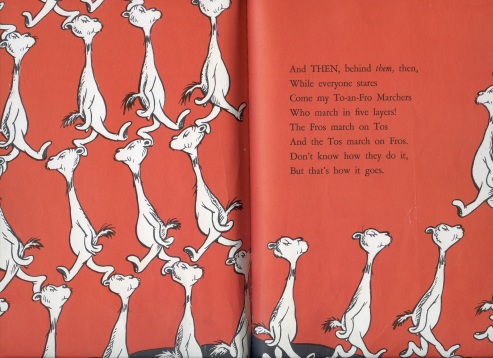 The newer cover bugs me, as usual, because it uses an image from the inside of the book rather than the original cover’s image. The original image of “you” on top of a rainbow cone-shaped mountain (seen at the top of this post) is not found anywhere else in the book so when it is taken off of the cover it is basically a piece of art just completely removed from the story!
The newer cover bugs me, as usual, because it uses an image from the inside of the book rather than the original cover’s image. The original image of “you” on top of a rainbow cone-shaped mountain (seen at the top of this post) is not found anywhere else in the book so when it is taken off of the cover it is basically a piece of art just completely removed from the story!
“Except when you don’t.
Because, sometimes, you won’t.I’m sorry to say so
but, sadly, it’s true
that Bang-ups
and Hang-ups
can happen to you. “
This quote breaks my heart every time I read it. I’m all teary-eyed just typing it out. It is so beautifully honest and something that we need to hear and accept more often as we grow up, so that it isn’t quite so shocking when it inevitably happens. If we are prepared for it then we can accept it and move forward.
FAVORITE IMAGE:
My favorite image is definitely The Waiting Place. It’s like a Where’s Waldo page of depression. I love all the detail and I don’t think there is any other page in all of Dr. Seuss’ work that has so many human figures in Seussian style.
Thanks for reading,
Jack St. Rebor
